DATASHEET
POWDERRANGE® 15-5PH
Applicable specifications: AMS5659
Associated specifications: UNS S15500, ASTM A564/A564M, AMS7021

Type analysis
Single figures are nominal except where noted.
| Iron | Balance |
| Copper | 2.50–4.50 % |
| Molybdenum | 0.50 % |
| Carbon | 0.070 % |
| Sulfur | 0.015 % |
| Chromium | 14.00–15.50 % |
| Manganese | 1.00 % |
| Niobium | 5x C to 0.45 % |
| Oxygen | 0.030 % |
| Nickel | 3.50–5.50 % |
| Silicon | 1.00 % |
| Nitrogen | 0.10 % |
| Phosphorus | 0.030 % |
Description
PowderRange® 15-5PH stainless steel is a martensitic precipitation/age-hardening stainless-steel similar to 17-4PH offering higher strength and hardness, along with excellent corrosion resistance, up to 600°F (316°C). It has good fabricating characteristics and can be age-hardened using a single-step, low temperature treatment that can be chosen to achieve specific strength and toughness combinations. Due to this balanced combination of performance and ease of use in AM, 15-5PH stainless steel has been used for a wide variety of additive manufacturing applications, including rapid tooling, functional components in nearly every market, and prototyping.
Key Properties
- Good strength, toughness, hardness, and ductility
- Good corrosion resistance
Markets
Applications:
- Surgical instruments and tools
- Valves and fittings
- Pumps and impellers
- Tooling
- Manifolds
- Industrial and chemical processing equipment
Powder properties
| Part Number | PowderRange® 155 F |
| Application | L-PBF1 |
| Maximum Particle Size | Max 1 wt% > 53 µm2 |
| Minimum Particle Size | Max 10 vol% < 15 µm3 |
| LSD Percentile | D10, D50, D903, reported |
| Atomization | Nitrogen Gas Atomized |
| Apparent Density (G/CM3) | Measured according to ASTM B2124 and reported |
| Hall Flow (S/50G) | Measured according to ASTM B2135 and reported |
1ASTM/ISO 52900: Laser—Powder Bed Fusion (L-PBF), Electron-Beam Powder Bed Fusion (EB-PBF), Directed Energy Deposition (DED)
2ASTM B214 Standard Test Method for Sieve Analysis for Metal Powders
3 ASTM B822 Standard Test Method for Particle Size Distribution of Metal Powders and Related Compounds by Light Scattering
4 ASTM B212 Standard Test Method for Apparent Density of Free-Flowing Metal Powders Using the Hall Flowmeter Funnel
5 ASTM B213 Standard Test Method for Flow Rate of Metal Powders Using the Hall Flowmeter Funnel
Testing of powder will fulfill certification requirements to Nadcap Materials Testing and ISO/IEC 17025 Chemical, per relevant ASTM procedures
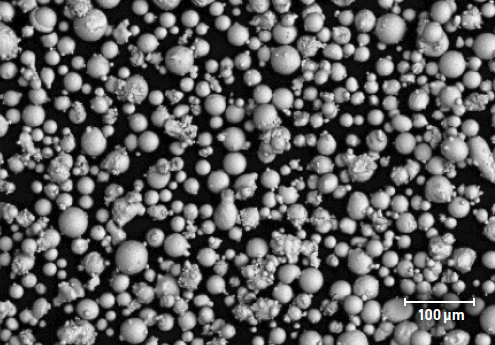
FIGURE 1—SEM IMAGE OF TYPICAL PowderRange 15-5PH POWDER
Additive manufacturing process guidance
ASTM/ISO 52900: LASER-POWDER BED FUSION (L-PBF)
Laser-Powder Bed Fusion(L-PBF) As-built
To achieve mean, as-built density >99.9%, 20 to 60 µm layer thicknesses and Specific Energy ≥ 50 J/mm3 is recommended.
Stress relief
Homogenization (Hom)
Hot Isostatic Press (HIP/Sol/H900)
To achieve up to full density (100%): Process components under argon at not less than 14.5 ksi (100 MPa) at a temperature of approximately 2087°F (1141°C); hold at the selected temperature for approximately 240 min then cool under inert atmosphere to below 800°F (427°C).
Follow with Solution Anneal and Age treatment as described below
Solution Annealand Age Condition (Hom/Sol/H900)
Sections under 3in. (76mm) can be quenched in a suitable liquid quenchant (e.g. water or oil) and sections over 3in. (76mm) should be rapidly air cooled. It is recommended not use this Solution Annealed condition, without age hardening, for the final product due to susceptibility to stress-corrosion cracking.
After Solution Anneal, age material as desired per ASTM A564/A564M, e.g. 900°F (482°C) for 1 hour and air cool.
Machinability
When using carbide tools, surface speed feet/minute (SFPM) can be increased between 2 and 3 times over the high-speed suggestions. Feeds can be increased between 50 and 100%.
TYPICAL MICROSTRUCTURES
CONDITION
TRANSVERSE (X-Y PLANE)
LONGITUDINAL (Y-Z PLANE)
NOTES
As-built
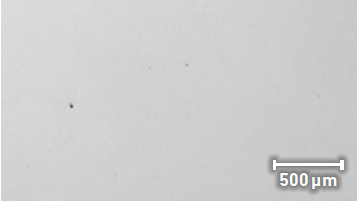
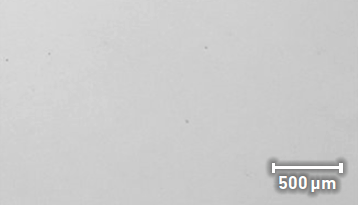
Mean densities greater than 99.9%
HIP/Sol/Age
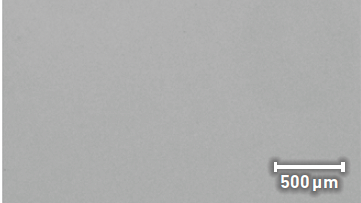
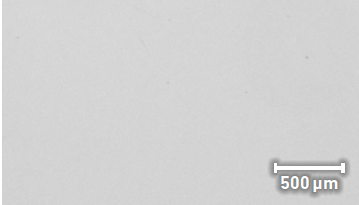
Up to 100% density
As-built, etched6
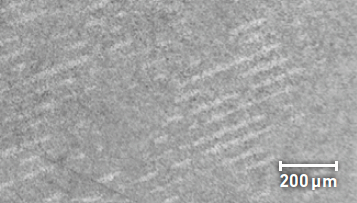
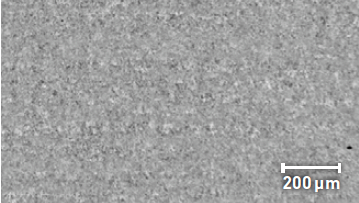
Typical pre-solutionized PowderRange 15-5PH microstructure, consisting of martensite with minimal carbide precipitates
Hom/Sol/ H900, etched6
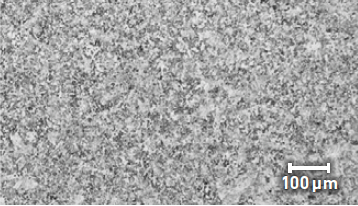
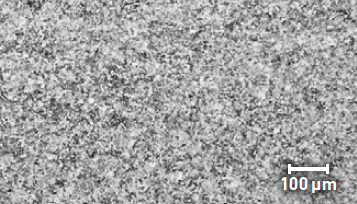
Average grain size ASTM 7-87 Typical PowderRange 15-5PH aged martensitic microstructure
HIP/Sol/ H900, etched6
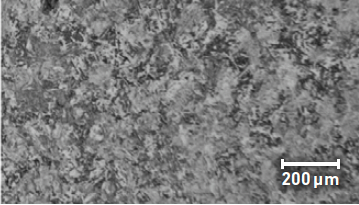
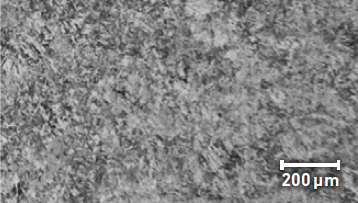
Average grain size ASTM 7-87 Typical PowderRange 15-5PH aged martensitic microstructure
6 Etched with Ralph’s etchant
7 ASTM E112 Standard Test Method for Determining Average Grain Size
Typical achievable mechanical properties

8 Average of a minimum of 5 samples taken from across the extents of a build plate in each orientation and for each heat treatment. Testing performed in accordance with ASTM E8/E8M-16a (tensile), ASTM E23-18 (impact energy), and ASTM E18-19 (hardness). Additional data may be available through a wide range of consortia and other collaborations. Please contact Carpenter Additive for additional information.
9 ASTM A564A564M-13 XM-12 H900 Mechanical Test Requirements after Age Hardening Heat Treatment
Corrosion resistance
IMPORTANT NOTE: The following 4-level rating scale (Excellent, Good, Moderate, Restricted) is intended for comparative purposes only and is derived from experiences with wrought product. Additive manufactured material may perform differently; corrosion testing is recommended. Factors that affect corrosion resistance include temperature, concentration, pH, impurities, aeration, velocity, crevices, deposits, metallurgical condition, stress, surface finish, and dissimilar metal contact.
| Nitric Acid | Good |
| Phosphoric Acid | Restricted |
| Sodium Hydroxide | Restricted |
| Sea Water | Excellent |
| Humidity | Moderate |
| Sulfuric Acid | Restricted |
| Acetic Acid | Moderate |
| Salt Spray (NaCl) | Good |
| Sour Oil/Gas | Restricted |
Similar materials
| Company |
| Other Generic Names |
| Concept Laser |
| EOS |
| DMG Mori (Realizer) |
| Renishaw |
| SLM Solutions |
| Alternative Title |
| 1.4540, 15-5PH |
| – |
| PH1 |
| – |
| – |
| 1.4545 (15-5PH) |
For additional information, please
contact your nearest sales office:
The mechanical and physical properties of any additively-manufactured
material are strongly dependent on the processing conditions used to
produce the final part. Significantly differing properties can be obtained by
utilizing different equipment, different process parameters, different build
rates and different geometries. The properties listed are intended as a
guide only and should not be used as design data.
The information and data presented herein are typical or average values
and are not a guarantee of maximum or minimum values. Applications
specifically suggested for material described herein are made solely for the
purpose of illustration to enable the reader to make his/her own evaluation
and are not intended as warranties, either express or implied, of fitness for
these or other purposes. There is no representation that the recipient of
this literature will receive updated editions as they become available.
Unless otherwise specified, registered trademarks are property of
CRS Holdings Inc., a subsidiary of Carpenter Technology Corporation.

